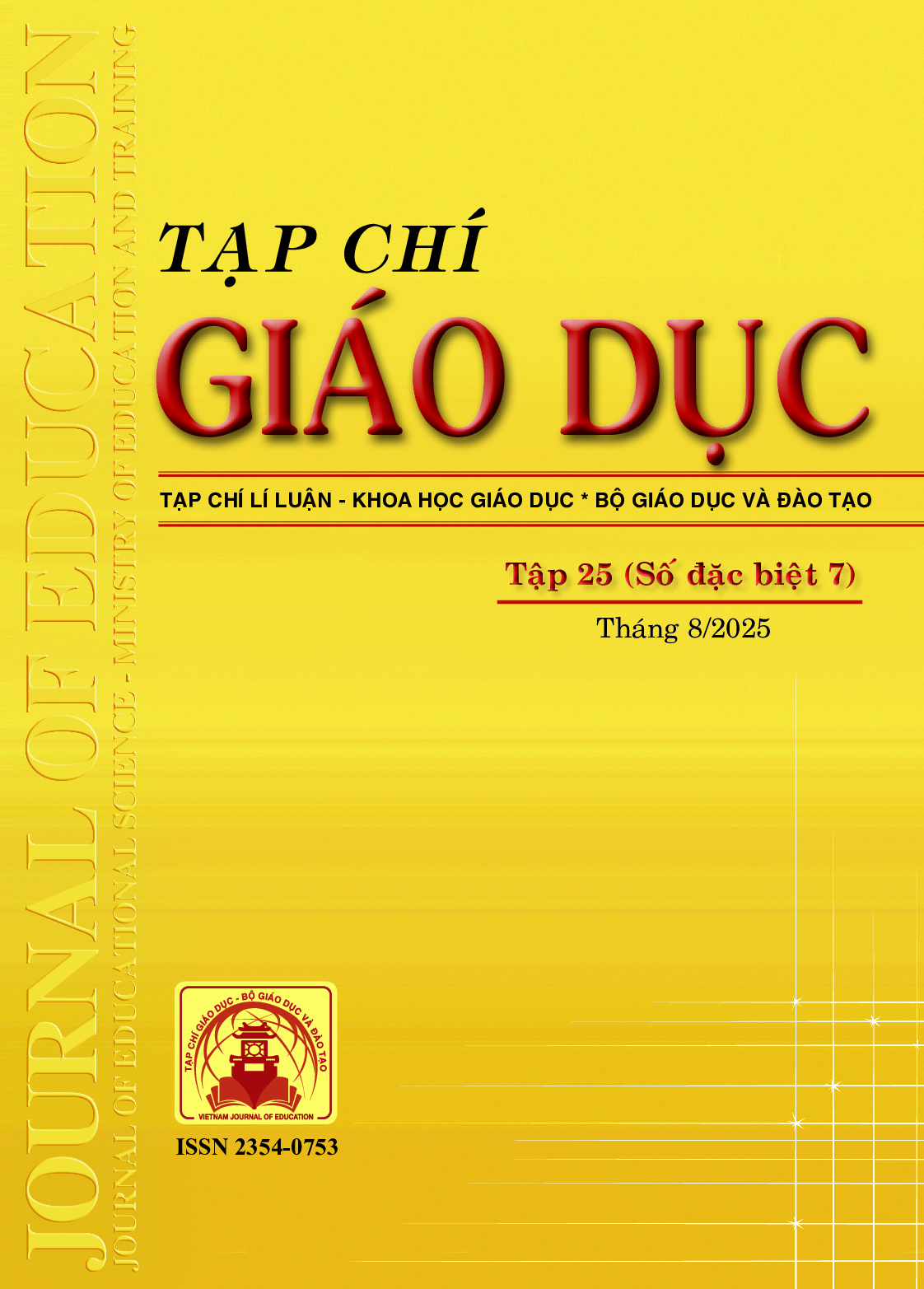Các yếu tố tác động đến sự phát triển của mô hình trường học xanh: nghiên cứu tại một số trường trung học cơ sở ở thành phố Hồ Chí Minh
Tóm tắt
In the context of an escalating global environmental crisis, the Green School model plays a vital role in promoting education for sustainable development. However, the implementation and improvement of Green Schools model at schools still face numerous challenges. This study identifies key factors influencing the development of Green School initiatives in lower secondary schools in Ho Chi Minh City. These factors include the quality of the learning environment, financial resources, school infrastructure, community engagement, and energy optimization. Identifying these core components holds theoretical significance in the field of education for sustainable development and offers practical implications for educational administrators in building strategies and effectively applying the Green School model in accordance with local conditions.
Tài liệu tham khảo
Aggarwal, D. (2023). Green education for a sustainable future. Journal of Environmental Impact and Management Policy, 3(04), 27-30.
Bộ GD-ĐT (2022). Quyết định số 2718/QĐ-BGDĐT ngày 21/9/2022 về việc phê duyệt danh mục nhiệm vụ bảo vệ môi trường của Bộ Giáo dục và Đào tạo đưa ra tuyển chọn thực hiện từ năm 2023.
Ezema, I. C., Nwosisi, H. C., Uwuigbe, C., & Ogheneovo, A. (2022). Greening the school energy system: A Nigerian case study. European Journal of Energy Research, 2(4), 17-25.
Gordon, D. E. (2010). Green schools as high performance learning facilities. National Clearinghouse for Educational Facilities. Washington, D.C.: U.S.A.
Karunakaran, S., & Verayiah, R. (2018). Framework for green school model development in Malaysia. International Journal of Engineering and Technology, 7(4), 442-448.
Lucius, I., Dan, R., Caratas, D., Mey, F., Steinert, J., & Torkler, P. (2011). Green infrastructure: Sustainable investments for the benefit of both people and nature. WWF Danube-Carpathian Programme, WWF Germany, Giurgiu County Council.
Meron, N., & Meir, I. A. (2017). Building green schools in Israel: Costs, economic benefits and teacher satisfaction. Energy and Buildings, 154, 12-18.
Nguyễn Thị Kim Anh, Nguyễn Thị Thanh Mai, Hoàng Thị Thanh Thủy (2016). Mô hình trường Đại học Xanh ở Hàn Quốc. Tạp chí Khoa học Xã hội Việt Nam, 9(106), 100-107.
Peterson, K., Torcellini, P., & Grant, R. (2015). A common definition for zero energy buildings (DOE/EE-1247). U.S. Department of Energy & National Institute of Building Sciences, Washington DC (United States); National Institute of Building Sciences, Washington, DC (United States).
Pradhan, S., Jang, Y., & Chauhan, H. (2024). Investigating effects of indoor temperature and lighting on university students’ learning performance considering sensation, comfort, and physiological responses. Building and Environment, 253, 111346.
Sterrett, W., Imig, S., & Moore, D. (2014). US Department of Education Green Ribbon Schools Leadership Insights and Implications. Journal of Leadership & Organizational Studies, 12(2), 1-18.
UNESCO (2024). Green school quality standard: Greening every learning environment.
Zhao, D. X., He, B. J., & Meng, F. Q. (2015). The green school project: A means of speeding up sustainable development?. Geoforum, 65, 310-313.
Đã Xuất bản
Cách trích dẫn
Số
Chuyên mục
Giấy phép

Tác phẩm này được cấp phép theo Ghi nhận tác giả của Creative Commons Giấy phép quốc tế 4.0 .












